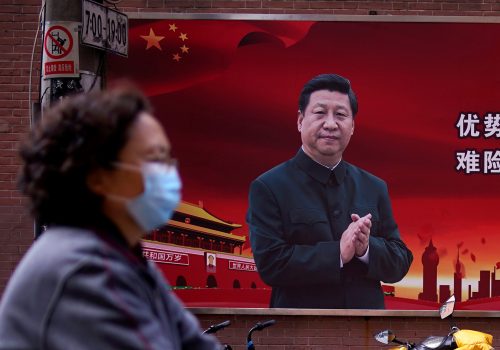Scenario 3: New Renaissance
The post-COVID world: scenario 3
One of three scenarios sketching possible directions of the global system post-COVID-19. Because the crisis is still unfolding, these represent a preliminary look at the crisis’ geopolitical implications.
Download the full report using the button below.
The full text of the paper is split across the various articles linked below. Readers can browse in any order. To download a PDF version, use the button below.
As the global economy collapses, G7 and G20 leaders with a new US leader at the helm rise above nationalistic impulses and forge an agreement on a coordinated recovery plan, including the lifting of border closures and relaxation of tariffs and other trade barriers.
After a slow start, the recovery gains traction and the major economies see renewed growth. The V-shaped recovery finally happens. However, it took several quarters before the takeoff occurred, helped by the discovery and rapid dissemination of a vaccine.
During that period, the G20, with renewed US backing, convened and set in motion a coordinated effort with drug companies to find and distribute a vaccine. The G20 made sure that everyone in the world would be vaccinated without charge, which increased market confidence.
Improved governance worldwide
Across the world, public sentiment insisted such a disaster should never happen again. Leaders saw what happened in the United States as Trump was swept out of office.
There are widespread calls for all governments to reform. Never again should the warnings be ignored nor should governments be caught so flat-footed. G20 leaders call on the WHO and other UN agencies, the Bretton Woods institutions, and the WTO to establish a warning agency on disease, conflict, and climate.
Some leaders want to go further and empower such an agency to levy sanctions against countries that defy warnings. The EU is the first to say it would agree to the plan for a superagency, seeing it as a way to make sure China becomes a responsible global citizen, not just on disease control, but also on climate and avoiding conflict with its neighbors.
Forced by international pressure, China permanently closes its wild animal markets and starts enforcing new laws that prohibit livestock in dense urban areas. As long as the super warning agency is not packed with Western countries, but also includes substantial Chinese and developing world representation, Beijing is persuaded to back the initiative, seeing it as a good counter against the protectionist measures which the United States and Europe have threatened China with after the pandemic.
Even though the new US president is personally in favor, many Americans object to what they see as a big step towards “world government.” Just as the League of Nations split Americans, there are heated debates, but the recent memory of the pandemic and near-economic collapse sways just enough lawmakers in Washington that the vote passes by a slim margin.
Promising signs for international cooperation
No one thinks this will be the end of Sino-American differences, but it means that in several areas the United States and China will be working together.
Trade negotiations will still be difficult, and Washington remains concerned about expanding Chinese influence with the BRI. US ties with Europe also improve, as for Europeans, Washington is back on a multilateralist path.
Dealing with these global challenges brings the United States, the EU, China, and other states together. They can agree they all have a mutual interest in combatting climate change and future health crises. For the United States, China and Russia are still threats, but the efforts to counter them and their authoritarianism must be conducted carefully to avoid endangering the global fight against diseases, environmental destruction, and state failure.
Increasingly now, the United States and the EU seek to convince China to wrap the BRI into a larger US-EU-China “Marshall Plan” for struggling countries in the developing world.
With the lowering of interstate tensions, economic growth resumes and, for the majority of the world’s population, the Sustainable Development Goals of eliminating poverty and spreading education are once again within reach.
Additional scenarios
View the full report
About the authors
Image: World leaders gather around a conference table




